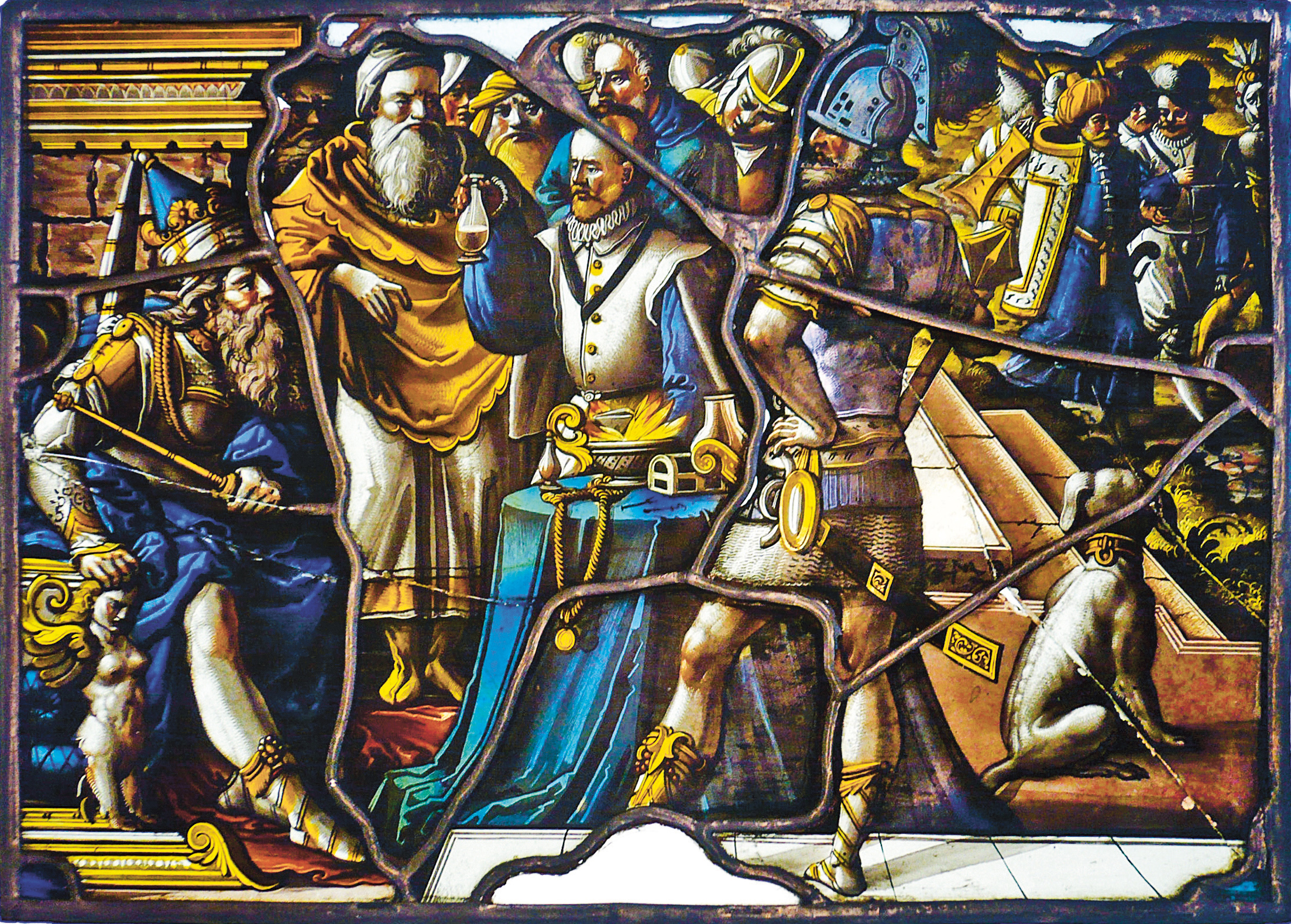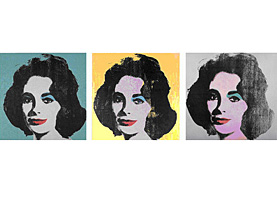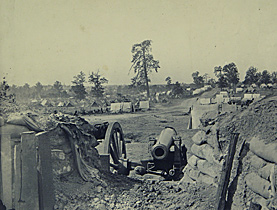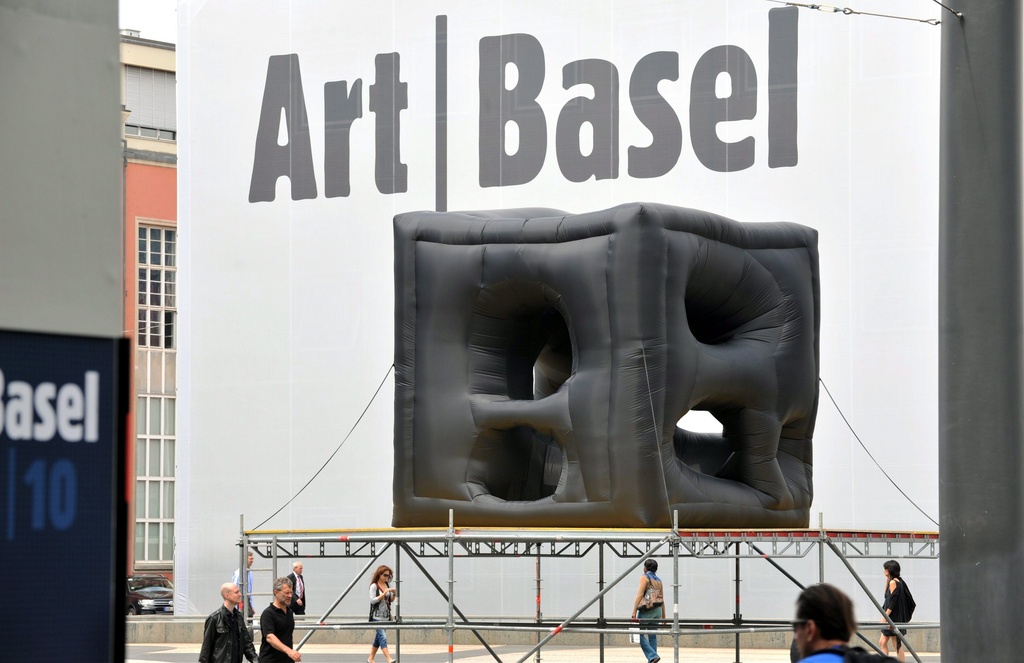Basel’s 16th-century superstar

He rose from rags to riches, travelled the world and dabbled in war, medicine and alchemy. Leonhard Thurneysser’s life is so extraordinary it would make a good film.
Instead Thurneysser used what was available to him in the 16th century: he made himself the subject of a stunning stained-glass window cycle. But such showing off did not go down well with the good burghers of Basel.
The cycle is now the subject of the Thurneysser Superstar exhibition at Basel’s Kunstmuseum.
Curator Bodo Brinkmann says that Leonhard Thurneysser zum Thurn, to give him his full name, would have liked the superstar title, had it already existed in the 16th century.
“The stained-glass cycle that he commissioned in 1579 celebrating his life and his deeds as a soldier, scientist, scholar and entrepreneur is unique even on a European scale,” Brinkmann told swissinfo.ch.
Indeed, such an honour was usually accorded to kings and emperors – not men who had risen from being a goldsmith’s son to a millionaire.
Thurneysser was born in Basel in 1531. “He never attended university or obtained any degree but he did research into all kinds of subjects: geography, geology, medicine, and did pharmaceutical experiments,” Brinkmann said.
However, he was not above dodgy dealing either: and in 1558 he was forced to flee the Rhine city after a gold fraud was discovered. His travels, which included a stint of soldiering in Europe’s wars of religion, took him across Europe and to Russia, as well as to Egypt and Asia Minor.
Medical skills and urine
While in Germany, Thurneysser’s medical skills came into play when he was appointed the personal physician of the elector of Brandenburg, after curing the elector’s apparently terminally ill wife.
“He grasps the opportunity to make a substantial fortune in Berlin, having what we could call the first online drugs store, selling his liquids and medications to all of Europe,” Brinkmann explained.
In his monastery premises, Thurneysser would receive urine samples from the great and the good of Europe and, having made a diagnosis from these, send out the appropriate medicine. He also had a nice line in travel medicine chests. The Swiss later added a printing press and a banking operation.
This made him a very rich man indeed. But in 1579, following the death of his beloved second wife, he decided to return to his home city of Basel. He then commissioned Zurich artist Christoph Murer to make the stained-glass window cycle for his new home on the Kohlenburg.
Two of these vibrant panels, depicting Thurneysser’s birth and him setting off for his travels, have survived, as well as a fragment of a third one showing Thurneysser testing urine for a potentate in the Middle East.
Drawings exist for a further three panels, including an impressive one showing Thurneysser buying a piece of a mummy in the Middle East, along with a facsimile of a fourth one which perished in the Second World War.
Showing off
Stained-glass windows had a prestigious tradition in Basel and the rest of the country, serving as status symbols.
The cycle was a way for Thurneysser to show Basel that he had made it. But his showing off bordered on the impertinent – Thurneysser was not above comparing himself to Homer or Ulysses in the panels – which did not get a warm reception from the burghers.
“They didn’t like it, and above all, they didn’t like the fact that even this very rich man didn’t pay for the stained-glass cycle himself, he had sponsors, the greatest amongst them being Pope Gregory 13th who paid for a piece,” Brinkmann said.
Thurneysser was, in any case, a controversial figure. Members of the university considered the non-scholar a charlatan.
He did much PR to counter this. He authored a multitude of books on subjects such as alchemy, healing and astrology, some of which can be seen in the show. Never one to miss an opportunity, most had a splendid picture of the author inside.
Bitter end
In the end, matters in Basel came to a head. “There is a bad marriage and he gets divorced very quickly, losing all his fortune during the judicial proceedings,” Brinkmann told swissinfo.ch.
“So in the end he gets very bitter. He leaves town and he publishes books on how dreadful Basel and the Basel citizens are.”
Thurneysser fled to Rome where he worked as a cardinal’s doctor, before travelling through southern Germany. He died in 1596 in Cologne, in the house of a goldsmith friend.
In some ways, Thurneysser was very modern, and had he lived today, Brinkmann believes he would perhaps have been an internet entrepreneur.
“Like Bill Gates who dropped out of university and didn’t finish, he had no university training at all, but still was very clever and, above all, he was very curious to learn, see new things, explore and then to make money from it,” the curator said.
“And this seems to be pretty much an attitude of the first years of the 21st century. So in a sense you sometimes feel he was way ahead of his time.”
Thurneysser Superstar: A unique stained-glass cycle, 1579, runs at the Basel Kunstmuseum until February 13, 2011.
Two intact panels depict Thurneysser’s birth and him setting off for his travels. A fragment of a third one shows Thurneysser testing urine for a potentate in the Middle East.
Drawings exist for a further three panels: Thurneysser as a studious boy and goldsmith’s apprentice; in praise of his military virtues; his travels to Jerusalem, Mecca and Mount Sinai, where he bought mummies for pharmaceutical production. There is also a facsimile of one which perished in the Second World War.
The exhibition has links to the Far Away from Home show at the Historical Museum as Thurneysser’s life can be considered an example of the lives of migrants and emigrants laid out in the show.
According to the city of Basel website, the Basel area is Switzerland’s second-most important business centre. This largely comes through the pharmaceutical and chemical companies, among them two of the world’s top five. Research and education play an important role in Basel’s wealth and the city has one of Europe’s oldest universities.
Basel also has almost 40 museums, some world renowned, such as the Beyeler Foundation, and generally has a thriving cultural life. Once a year it hosts Art Basel, the world’s leading contemporary art fair.
The borders of Switzerland, France and Germany come together at Three Countries Corner in Basel. The city is also an international transport hub.
There is a beautiful Old Town and the River Rhine flows right through the city. Basel’s population numbers around 190,000.

In compliance with the JTI standards
More: SWI swissinfo.ch certified by the Journalism Trust Initiative




You can find an overview of ongoing debates with our journalists here. Please join us!
If you want to start a conversation about a topic raised in this article or want to report factual errors, email us at english@swissinfo.ch.